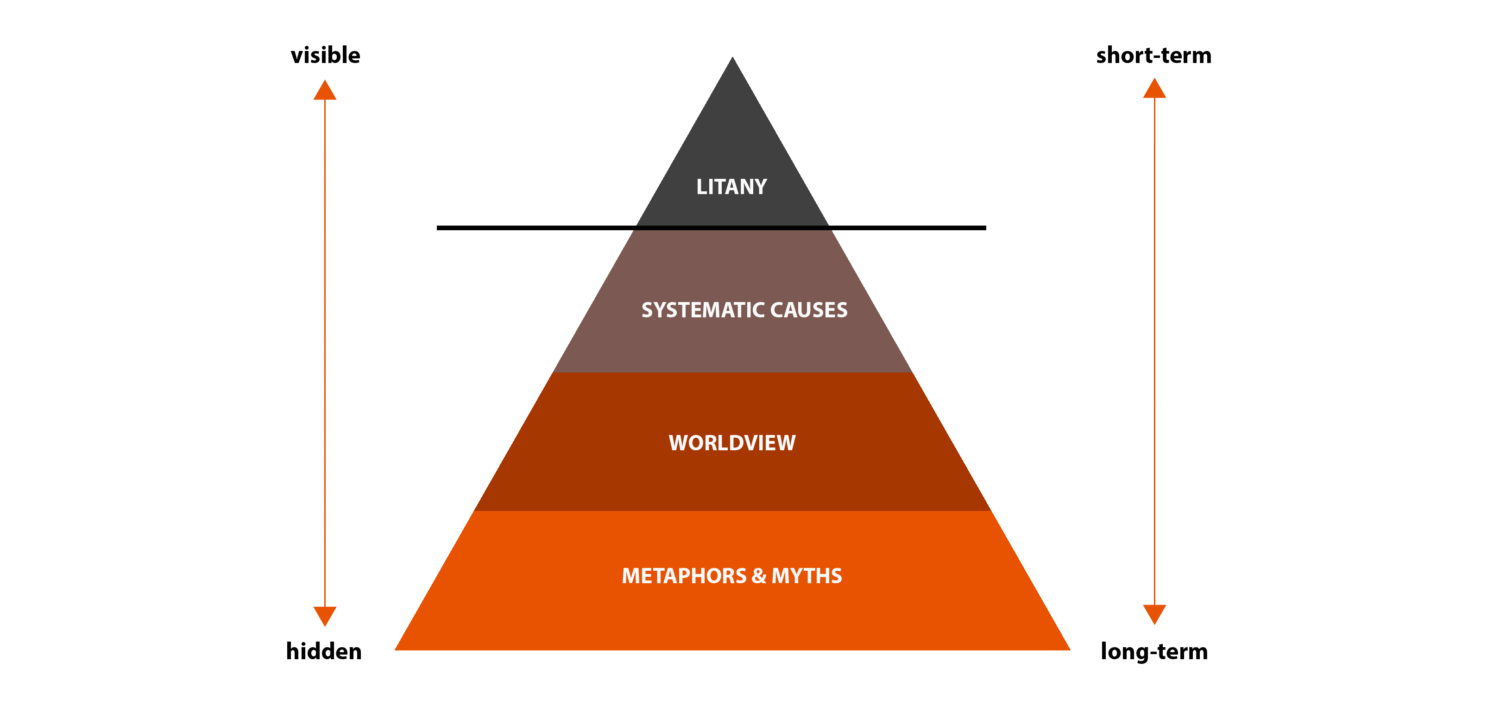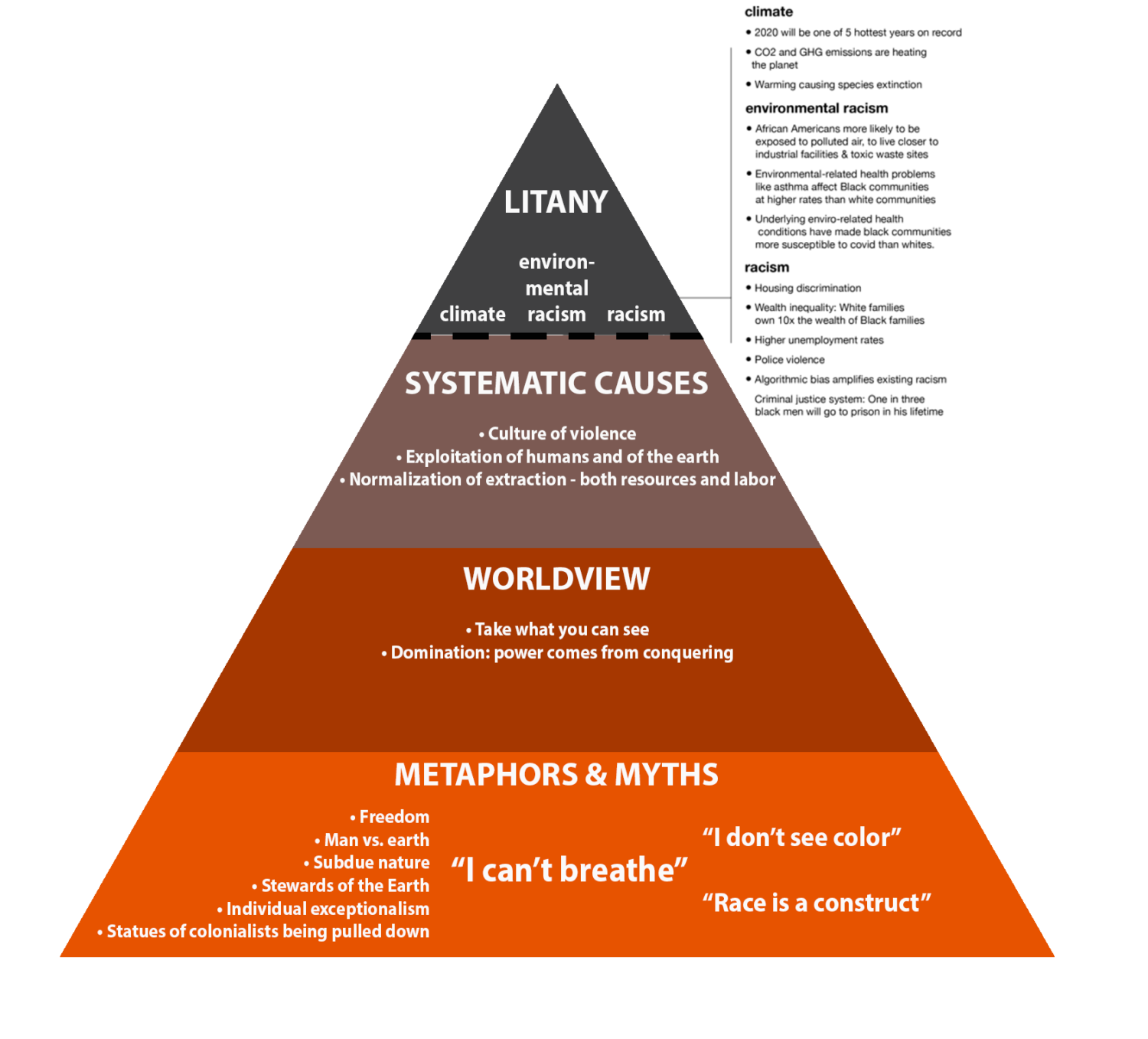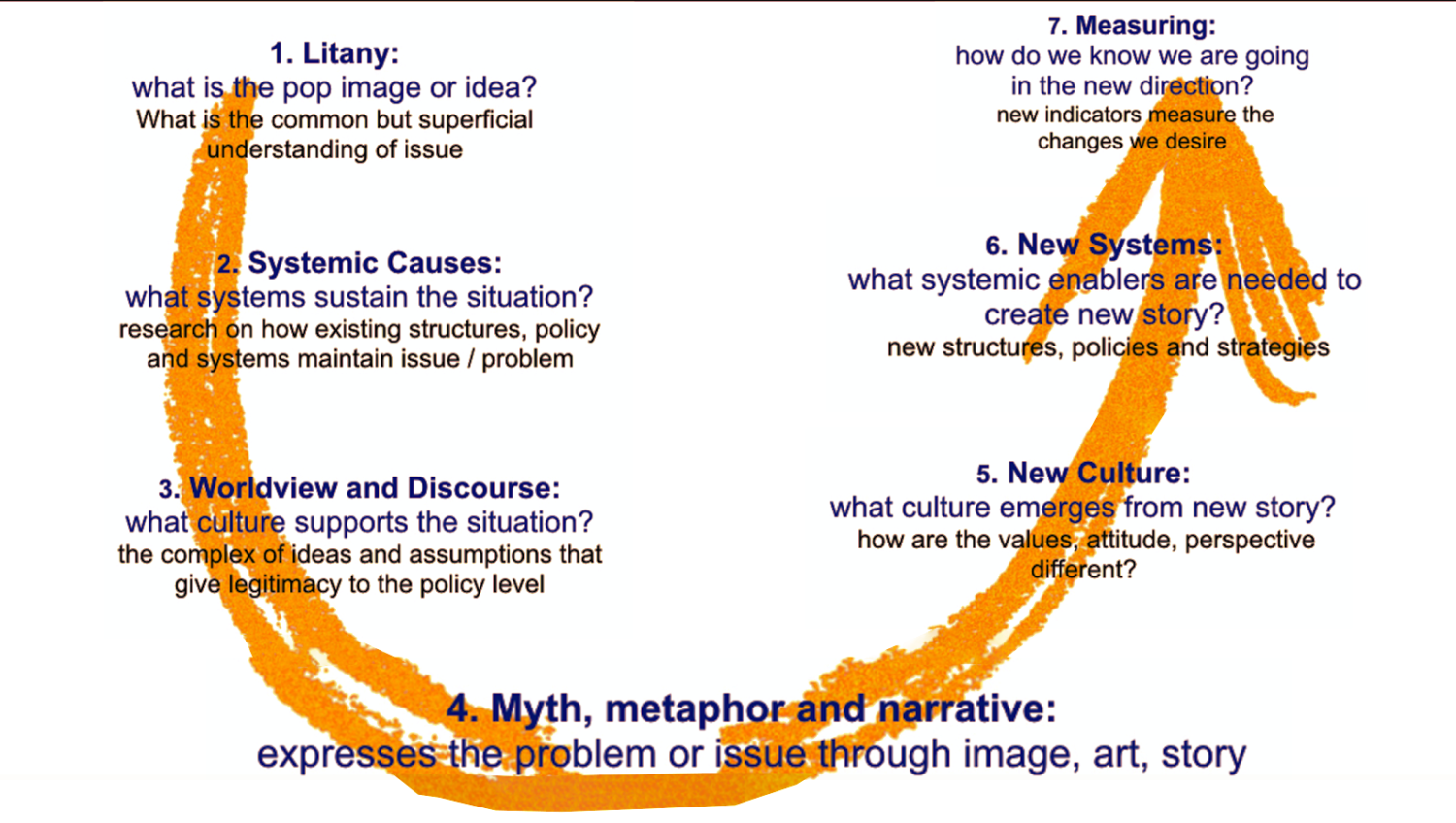Using Causal Layered Analysis for Transformational Change
A futures framework for understanding the layers of complex and intersectional issues.
A futures framework for understanding the layers of complex and intersectional issues.
A new day, a new headline that further links climate change to racial inequity—a recent one read, “Climate Change Tied to Pregnancy Risk, affecting Black Mothers Most.” The last four weeks have brought equity to the forefront of conversations about chronic problems, further exacerbated by overlapping and underlying systemic issues. Causal Layered Analysis (CLA) is a helpful futures framework for understanding the many layers of complex and intersectional issues. Understanding these layers allows us to see similar root causes; when we spend time at that level, we can begin to create transformational stories of the future.
March almost seems like a year ago, when a new narrative about climate change had begun to emerge, with COVID-19 introducing now widely-understood language (flattening the curve) and concepts (mutual aid) that would not only help us get through the pandemic, but would be relevant and applicable to how we prepared to face climate change. We were told that COVID-19 was a dress rehearsal for climate change. That climate change, the warning signs of which we had been willfully ignoring for decades, would be the next pandemic. We were wrong. The next pandemic is, and has been, systemic racism.
And now as lawmakers across the country are declaring racism a public health emergency, it’s impossible—and irresponsible—to talk about climate futures without talking about racial justice. Neither one stops while we’re focused on the other, and we can't imagine futures in which one is solved without the other. As Sunrise Movement’s digital director Mattias Lehman said, “All of our fights for justice are occurring within a shared ecosystem.”
In this context, when applied to both racial injustice and climate change, the CLA framework allows us to see that the root cause of one is the root cause of the other, born of the same worldview that allows domination and exploitation, whether it be of humans or of the land.
This method, pioneered by Sohail Inayatullah, breaks issues down into four layers:

Framework: Causal Layered Analysis
Sohail InayatullahThe impacts of climate, racism, and environmental racism are well-documented. As climate scientist Ayana Elizabeth Johnson writes, “People of color disproportionately bear climate impacts, from storms to heat waves to pollution. Fossil-fueled power plants and refineries are disproportionately located in black neighborhoods, leading to poor air quality and putting people at higher risk for coronavirus.” And climate gentrification will inevitably impact those who are already bearing the multiple brunts of climate, poverty, and racism more severely than their whiter and wealthier counterparts.
Trying to address these particular impacts at this level is important on a short-term scale, but if we want to create long term equitable futures, the CLA framework invites us to go deeper into the hidden layers of structures; change at this level has the potential to be long-term systemic change.

An exploration of racial injustice and climate change using the CLA framework.
Within these four layers of analysis there are opportunities for four levels of transformation from which new culture and systems can emerge. It is at the level of Metaphors and Myths—of narrative shift—that we have the opportunity to embed equity from the start.

Causal Layered Analysis points of interrogation
Jose RamosThe Pop Culture Collaborative understands this well. Working with the “social justice sector and pop culture industries, the Collaborative believes activists, artists, and philanthropists can encourage mass audiences to reckon with the past and rewrite the story of our nation’s future.” A 2014 poll revealed that watching shows that featured LGBTQ characters helped drive support for marriage equality.
The CLA framework reminds us that in order to make change at the levels that are most visible to us, we need to start by creating new myths and metaphors that in turn will support the worldviews and systems needed for a more equitable future in which there is space for all of us to thrive. By listening to and highlighting the voices and stories of Black individuals and Black environmentalists, we collectively create new societal myths while also creating new cultures, systems, and solutions to the racial and climate challenges we are facing.
NAACP Environmental and Climate Justice program Director Jacqui Patterson writes that “to ensure an economy built on cooperative and regenerative principles which look out for all people...We need frontline communities leading our own solutions...Our future must be rooted in a just transition. This involves moving away from a society functioning on extraction to one rooted in deep democracy and to one integrating regenerative processes, cooperation, and acknowledgement of interdependence and again, where all rights are respected (indigenous, women’s, and all marginalized communities) and honored...We have to get to a place where we can live in harmony with each other and the Earth.”
Climate
2020 will be one of 5 hottest years on record
CO2 and GHG emissions are heating the planet
Warming causing species extinction
Environmental Racism
African Americans more likely to be exposed to polluted air, to live closer to industrial facilities & toxic waste sites
Environmental-related health problems like asthma affect Black communities at higher rates than white communities
Underlying enviro-related health conditions have made black communities more susceptible to covid than whites
Racism
Wealth inequality
White families own 10x the wealth of Black families
Higher unemployment rates
Criminal justice system
Want to receive free tips, tools, and advice for your foresight practice from the world's leading futures organization? Subscribe to the IFTF Foresight Essentials newsletter to get monthly updates delivered straight to your inbox.
Ready to become a professional futurist? Learn future-ready skills by enrolling in an IFTF Foresight Essentials training based on 50+ years of time-tested and proven foresight tools and methods today. Learn more ».